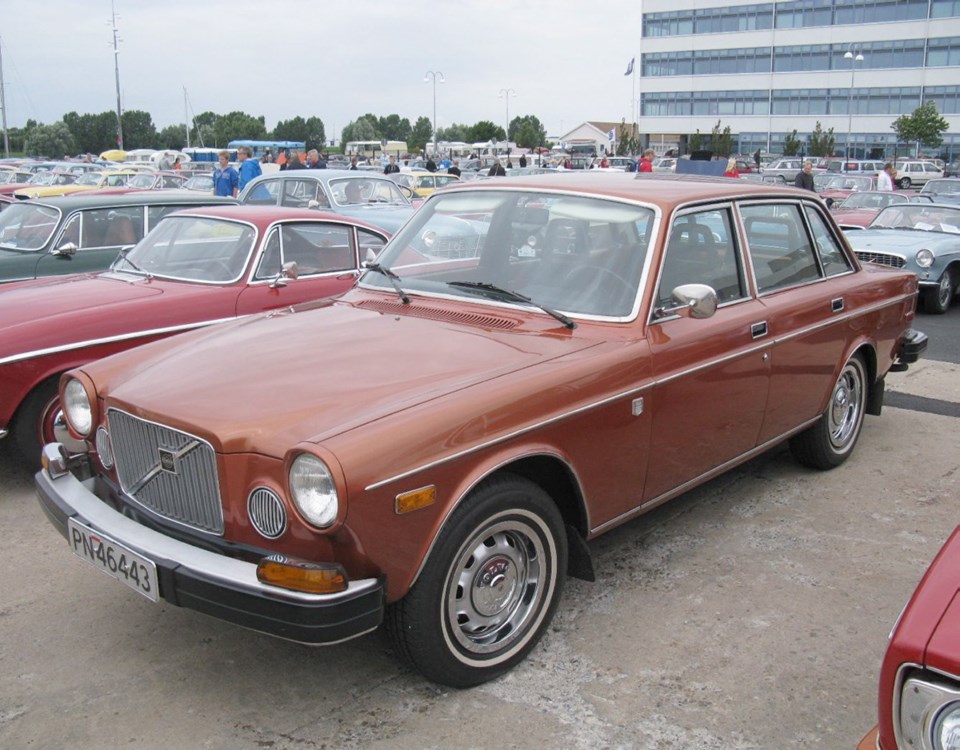By the time the mid-1960s rolled around, the Volvo Co. decided it was time to offer its loyal 544 buyers more luxury for when they felt ready to move up. The 544 was the “1946 Ford look-alike” that had been put into production in 1947 and arrived in California in 1955, introducing Volvo to North Americans.
The 544’s early buyers tended to be academics, engineers and sports-minded owners who were captured by the Volvo’s robustness and spirited performance. It served them well and quickly established Volvo as a sturdy, good-performing economical car.
Most observers had expected the 1956 Series 121/122 (Amazon) with its pleasant contemporary styling to replace the 544, but the old standby’s reputation was so strong and its goodwill so entrenched that it would be built until 1965. Its ultimate replacement was the 140 Series introduced in 1966.
But Volvo wanted to offer a luxury option for those buyers who were getting a little older or more affluent. And management was also aiming to attract new upscale clients such as doctors, lawyers, dentists and business owners, people who might be considering a Mercedes or Jaguar, or perhaps a Buick.
Volvo’s answer to meeting rising owner aspirations and attracting new clients was the 164 four-door sedan introduced at the Paris Auto Show in 1968 as a 1969 model. True to its Swedish roots, the 164 had nothing to do with opera windows, vinyl tops or excessive chrome. It was a Volvo, after all, with all the rational good taste the brand was known for.
What the 164 offered was a practical style that still managed to look elegant. It had an extended hood and tasteful vertical-bar grille with the trademark Volvo diagonal slash that had adorned most Volvos, including “Jakob,” the very first one in 1927. To set it apart, the 164’s coddling interior was fitted with supple leather seats, deep pile carpeting and woodgrain instrument panel. It also brought a lengthy list of standard equipment.
The biggest departure of all was under the hood — Volvo’s new six-cylinder B30 engine. It was not Volvo’s first six; it had offered one as far back as 1929. But North Americans knew Volvo only as a four, so it was a novelty to them. Although the 164’s six was new, it came with a worthy ancestry, as it was really an expanded version of the robust two-litre 140 series overhead-valve four.
The bore and stroke were the same, and most parts were identical. Engineers created it by designing a longer block and sturdy seven-bearing crankshaft and using the four cylinder’s components to complete the job. It was an ingenious and relatively economical way to create a new engine.
Twin 44-millimetre Zenith-Stromberg carburetors took care of induction, and the six developed 145 horsepower, which went through a four-speed manual floor-shift transmission that was available with overdrive and automatic.
Underneath, the unit-construction 164 was based on the 140 with an extra 102 mm added to the wheelbase, bringing it to 2,700 mm. Additional length was all in the hood and front fenders to accommodate the six. The 164’s 4,714-mm overall length was 76 mm longer than the 140’s and it weighed 1,324 kilograms, 181 kg more than the Volvo 142.
Suspension followed the 140 with coil springs, A-arms and an anti-roll bar in front, and at the rear, a solid axle, coil springs and trailing arms. Steering was power-assisted, as were the four-wheel disc brakes. A short 9.6-metre turning circle was a welcome feature when manoeuvring in tight spaces.
Volvo had established a well-deserved reputation for performance that was carried on in the 164. It was a feature important to Volvo’s intended class of buyers. Even though they might not often use it, they wanted to know it was there. According to Road & Track, the 164 scooted to 100 km/h in 9.5 seconds, a good four seconds faster than the more expensive Mercedes 250. Both topped out at about 180 km/h.
The 164’s main technical advancement came in 1972, when the twin carburetors were replaced by Bosch electronic fuel injection.
This carried the 164 through to the end of its production in 1975 after a total of 153,023 had been built. It was replaced by the 264 model in the 200 series, an evolution of the very popular 140 series.
The 164 had achieved its goal of moving Volvo upmarket by providing the luxury, visual impact and performance that Volvo was seeking. For this reason it is fitting to celebrate, in 2018, the 50th anniversary of its introduction.



